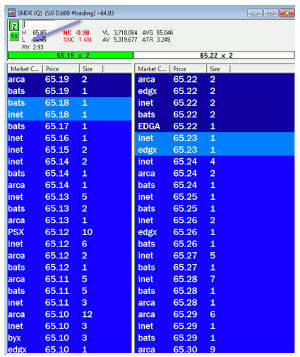Veteran trader Mike Bellafiore of SMB Capital shares a question-and-answer between him and a trader explaining the definition and use of relative volume (RVOL), which could also benefit other traders with questions on the subject.
Is Rvol the multiples above normal volume a stock is trading during the trade being shown? Such as an Rvol of 2 would mean the stock is trading at two times its normal volume. I can't find the answer and I'm not sure if that's right. If it is right then could you have a negative Rvol?
Thank you again and I look forward to our upcoming sessions.
Mike's Response
I put our research intern to work for an excellent definition of relative volume and my good friend Jeff White, The Stock Bandit, had one for us.
Relative Volume. This compares current volume to normal volume for the same time of day and it's displayed as a ratio. So for example, a stock trading 5 1/2 times its normal volume would have a Relative Volume display of 5.5.
Now how do we use relative volume? We use relative volume to gauge how In Play a stock is. When I am considering trading a stock I glance at relative volume, RV on my Level 2 as the screen grab shares below.
If RVOL is less than 1 it is not In Play on this trading day and I may decide not to trade it. If RVOL is above 2 it is In Play and this is more evidence I ought to be in the name. When stocks are very In Play, you can see an RVOL of 5 and above. The higher the RVOL, the more In Play the stock is.
I also use RVOL for position sizing. If RVOL is <1 I may decide not to take a very large position in the name. If RVOL is >3 this may give me more confidence to take a larger position as more reward and more liquidity should be present.
By Mike Bellafiore of SMB Capital



















